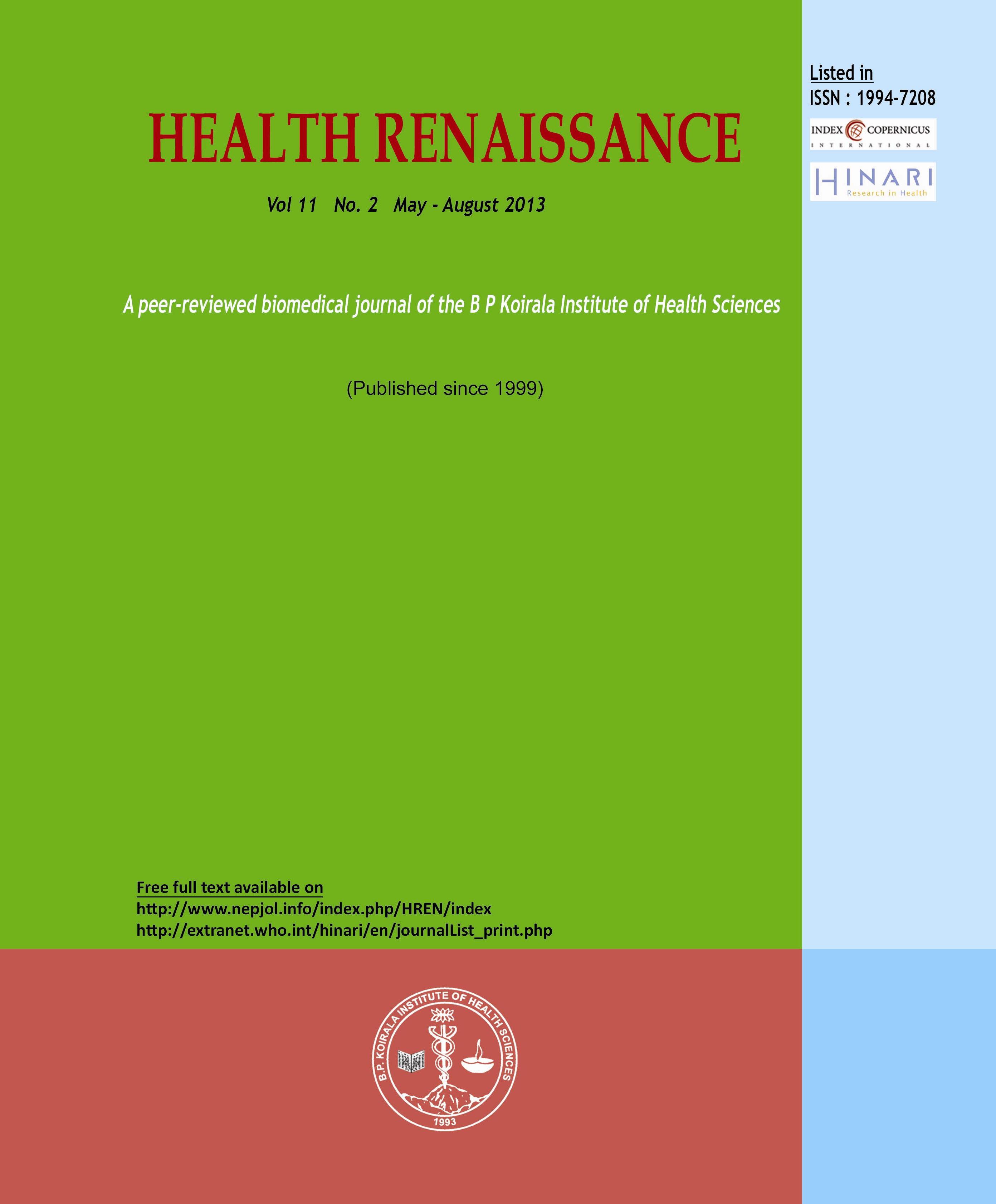A correlative study on cytopathological and histopathological findings in male genital tract lesions
DOI:
https://doi.org/10.3126/hren.v11i2.8221Keywords:
fine needle aspiration cytology, male genital tract lesion, biopsy, testicular tumorAbstract
Background: The incidence of male genital lesions has continuously increased during the last decades, especially in the developed countries. FNAC serves as an important tool to screen and diagnose all palpable lesions of the genital tract and provides sufficient information for the initiation of treatment without need for an open biopsy. This study compares the diagnostic outcome between FNAC and surgical biopsies in male genital tract lesions.
Objectives To find out the correlative attributes of cytological findings with the histologic diagnosis in male genital tract lesions.
Methods: This is a hospital based retrospective and prospective study spanning over a period of six years. A total of thirty seven male patients with genital tract lesions were subjected to both FNAC and biopsy. The age, site, duration of illness, onset of illness, history of pain, relevant past medical history, cytological and histological findings were recorded. Diagnostic contribution of FNAC was evaluated taking histologic diagnosis as gold standard.
Results: The age range was 2-80 years. Mean age was 39.37 year. Commonest site involved was right testis (27.0%) followed by left epididymis (21.7%). Predominant lesion was benign which constituted 59.4%. Malignancies formed 18.9% of all cases.
Conclusion: FNAC was observed to be capable of providing correct diagnosis in 78.4%. Taking histologic diagnosis as gold standard, FNAC was found to have a sensitivity of 81.48% and specificity of 42.85 %.
Health Renaissance, January-April 2013; Vol. 11 No.1; 138-144




